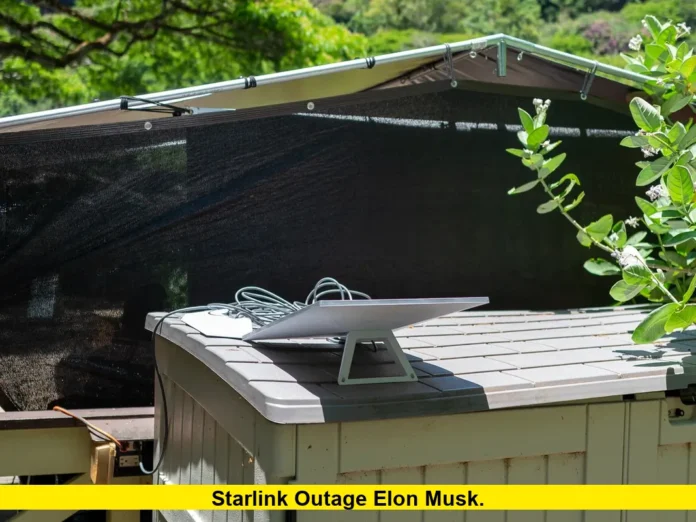Starlink outage Elon Musk: On July 24, 2025, millions across the globe faced a sudden blackout as Starlink, the satellite internet service operated by Elon Musk’s SpaceX, suffered its longest and most widespread outage to date. The incident quickly drew attention from media, governments, and users who rely on Starlink’s network for dependable connectivity.
The Outage: Timeline and Impact
Reports of Starlink’s connectivity problems started surging after 3:00 PM Eastern Time (about 7:00 PM GMT). Down Detector and similar platforms logged more than 60,000 outage reports within the first hour. The majority cited a “total blackout,” meaning users were unable to access any internet services through their Starlink connections.
The network went down in regions spanning North America, Europe, Asia, Africa, Australia, and even remote locales such as rural Texas, the Philippines, and parts of Sweden. For some, the disruption lasted about two and a half hours. Partial service restoration began to roll out by early evening, but users in several areas continued to face persistent issues into the night.
What Caused the Starlink Outage?
According to official statements and a personal update from Elon Musk, the outage resulted from a major software failure within the Starlink core network. Specifically, a routine software update triggered a “cascading failure” among the satellite systems, which disrupted communication between the satellites and ground terminals.
Starlink’s VP of Engineering, Michael Nicolls, clarified:
“The outage was due to failure of key internal software services that operate the core network. We apologize for the temporary disruption and are fully rooting the issue to ensure it doesn’t occur again.”
Musk himself addressed the event on X (formerly Twitter), writing,
“Service will be restored shortly. Sorry for the outage. SpaceX will remedy root cause to ensure it doesn’t happen again.”
Who Was Affected?
Starlink now covers around 130 countries, with over 6 million global customers and substantial business from government agencies, rural providers, and even military operations. The blackout hit not only private households but also businesses, emergency services, maritime operations, and front-line entities such as the Ukrainian military, which heavily relies on the system for battlefield connectivity.
Some users shared on social platforms that the lack of Starlink forced them to switch to mobile 5G for essential communications. Many expressed frustration over the unpredictability of outages when alternative internet isn’t available.
Technical Details and Company Response
The outage highlights the complexity and vulnerability of satellite-based networks—even those with the scale and redundancy of Starlink.
- The disruption was linked to an erroneous configuration during a software update meant to improve performance and latency.
- Internal sources indicated parts of the satellite mesh network went temporarily “soft-bricked,” severely degrading inter-satellite and ground communication.
Starlink’s engineering team responded by rolling back the update and manually restoring service. Within hours, connectivity rates on monitoring services like NetBlocks climbed back from 16% to near normal levels.
The Stakes and Future Changes
Starlink has fundamentally changed internet access for underserved and remote regions. This outage, however, raises important questions about the system’s resilience—especially as new services such as Direct-to-Device (D2D) cellular connectivity and expanded military usage launch worldwide.
Key facts from the event:
| Region | Time of Outage | Extent of Impact |
|---|---|---|
| North America | 3:00 PM – 5:30 PM ET | Blackout, slow speeds |
| Europe | 9:00 PM – late night | Disconnections reported |
| Asia/Australia | Nighttime (local) | Spotty recovery |
SpaceX committed publicly—and directly through Musk’s statements—to identifying and correcting the root cause, emphasizing that future updates will follow stricter safeguards to prevent similar failures.
Final Thoughts
For Musk and Starlink, this high-profile outage is both a challenge and an opportunity. The ability to recover swiftly and commit to higher reliability will shape trust in satellite broadband for years to come.
What are your thoughts or experiences during this Starlink outage? Let us know in the comments and join the discussion to stay informed about the world’s latest in satellite connectivity.
